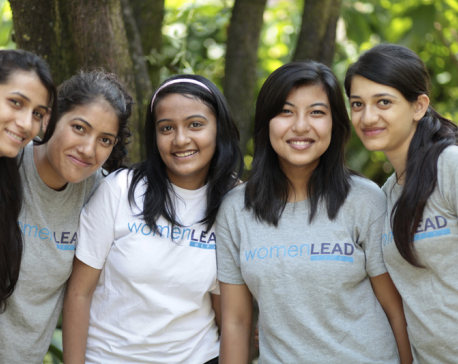
OR


Simone Galimberti
Simone Galimberti is the Co-Founder of ENGAGE, an NGO partnering with youths to promote social inclusion in Nepal.simone_engage@yahoo.com
Shimokawa is a small city in Japan located in a corner of Hokkaido. With a population of only 3836 people and surrounded by hilly forests, this tiny place could offer a blueprint for eco-sustainability for thousands of rural centers of Nepal. From total anonymity, Shimokawa is attracting world attention for its strategy to achieve the Sustainable Development Goals—the SDGs.
I am writing about SDGs because we are in July and this month should be rightly reframed as “SDGs carnival” as nations from all over the world are busy sharing their efforts to implement the goals at the United Nations High Level Political Forum 2020.
Nepal was one of the countries putting forward its latest update, the second so far, in its quest for the SDGs. Branded as Voluntary National Review, this reporting was envisioned as a tool to keep all state signatories of the Agenda 2030 from which the SDGs stem accountable.
Self-paced and country driven, basically such reviews tell the governments’ version on what they have done to lead their citizens towards a more sustainable, equitable and greener future.
Shimokawa is turning into a poster city because there is more and more attention on the role local governments can have in helping achieve the goals. It is called “localizing” the SDGs and it makes absolute sense for a country like Nepal. Other cities such as Tapei, Los Angeles and the Buenos Aires and Bristol have proved that implementing the SDGs is about resources, human and financial. It is about planning and monitoring but it is also about willpower and determination and farsightedness of political leaders and the citizens.
The National Planning Commission (NPC) in Nepal came up with a solid document that offers a mixed picture over the achievements so far gained by the country in its quest for the SDGs.
Poverty has been declining but not enough to reach the most vulnerable groups. Inclusion efforts targeting marginalized groups have been progressing but they are not steady enough. Caste based discrimination is still a big issue in all its forms. Shockingly, conditions of persons living with disabilities are barely mentioned. Equally worrisome is the fact that the report does not mention the plague of suicides afflicting the country nor offer much of specificities on the number of wellbeing programs being run nationally and locally.
Women empowerment apparently showed some signs of improvement but we are all aware that there is still so much to be done, in order to ensure a better deal for all women of this nation, from their economic rights, to their reproductive health, to their protection from violence and an overall rethinking of the role of women in the society.
Food security is still far from being ensured in western Nepal with widespread malnutrition among children, a scenario also observed in a vast number of vulnerability pockets across the country, especially in Tarai belt. Climate adaptation remains a challenge. There are huge gaps in pooling the resources to reach the goals by 2030. There is a need of additional 19 billion USD a year according to estimates by the NPC prepared in 2018 and the federal government looked overly reliant and optimistic on the contributions of the private sector. But with Covid-19 pandemic hitting the country, we cannot rely too much on corporates. If implementing the SDGs was already a costly business, it is going to be much more expensive.
Resources already allocated might be reverted, priorities reconsidered. Thus better coordination between the federal and provincial governments must be pursued. In coming days where resources will be much scarcer, considering the dramatic decline in remittances due to the forced return of the migrant workers.
It is going to be fundamental to engage local governments, ensuring that duplication and overlapping in programs, federally, provincially and locally, are going to cease.
Here comes the role of localizing the SDGs.
Shimoka offers an example. The small Japanese village has come up with strong mechanisms to involve its citizens in discussing, planning and monitoring of the SDGs and has developed a holistic approach to SDGs based on 10 steps that could be replicated and adjusted to different contexts.
In Nepal, each provincial Planning Commission has been trying to take into account the SDGs in their planning but the key challenge is at the grassroots. Considering the high level of people engagement especially in the rural areas of the country, many local communities can also come up with their uniquely drafted plans on how to achieve their versions of the goals.
Perhaps it is high time for a national compact for achieving the SDGs to be worked out by all the layers of governments, jointly agreeing on the role that each government—central, provincial and local—must play to create local blueprints for national prosperity. Citizens should be part of the equation as many of them are already actively engaged as volunteers and change makers at the grassroots levels.
The fact that the NPC did not recognize their contributions in its official review should be reverted at the earliest especially when a global meeting on reimagining how volunteerism can help achieving the SDGs has just concluded.
Let's imagine a new joint effort where big and small municipalities alike are creating bottom up partnerships to achieve their SDGs.
The author is Co-Founder of ENGAGE, an NGO partnering with youths to promote social inclusion in Nepal
You May Like This

Helping women re-envision a better Nepal: Women LEAD Nepal
KATHMANDU,March 7: Women LEAD Nepal started as an idea that women and girls could change the trajectory of Nepal’s future and... Read More...

SCOPE Nepal provides foil blankets to Nepal Army
KATHMANDU, Jan: SCOPE Nepal, an NGO working in peace, security, environment and social justice, handed over 378 emergency foil blankets to... Read More...








Just In
- NRB to provide collateral-free loans to foreign employment seekers
- NEB to publish Grade 12 results next week
- Body handover begins; Relatives remain dissatisfied with insurance, compensation amount
- NC defers its plan to join Koshi govt
- NRB to review microfinance loan interest rate
- 134 dead in floods and landslides since onset of monsoon this year
- Mahakali Irrigation Project sees only 22 percent physical progress in 18 years
- Singapore now holds world's most powerful passport; Nepal stays at 98th










Leave A Comment